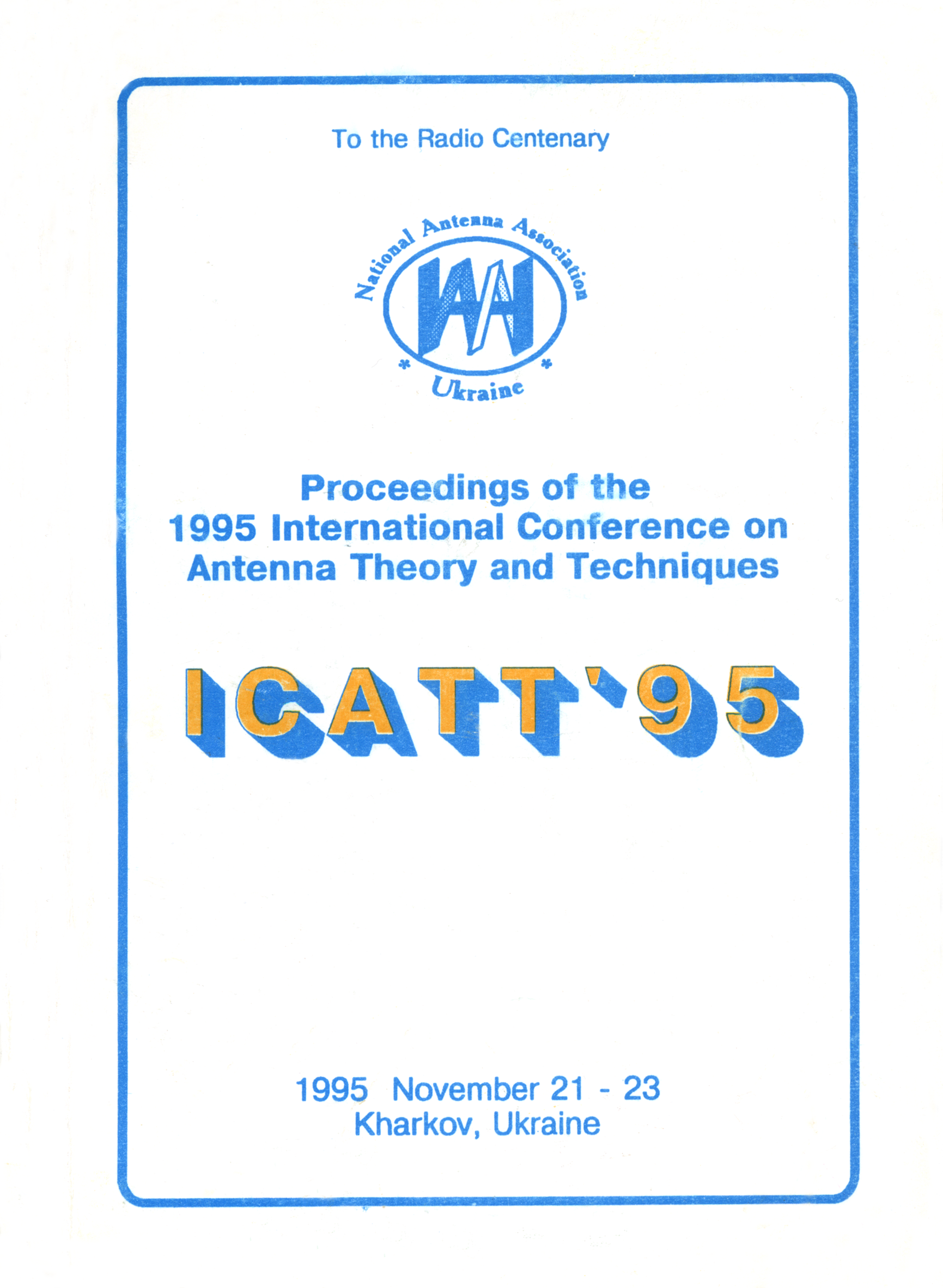Nonlinear effects in microwave antenna feeds
DOI:
https://doi.org/10.1109/ICATT.1995.1234174Abstract
The theoretical basis for the analysis of experimentally observed nonlinear effects and associated electromagnetic compatibility problems in microwaves antenna feeds has been absent so far. This caused the necessity of carrying out the present work.
The paper is aimed on the research of interior nonlinear electromagnetic problems. Here, the analysis of nonlinear effects arising in microstrip antenna feed line on a concentrated nonlinear element such as diode is carried out. Evaluations of nonlinear effect influence on electromagnetic fields in transmission lines, caused by the nonlinear contacts formed on the welded junctions and flanged joints of waveguide sections, concentric and distributed passive nonlinear loads and active elements of lines were also obtained.
The above mentioned tasks are considered as the nonlinear interior boundary problems of electromagnetic field excitation in some volume, which represent the internal cavities of wavequides or the structures containing surface-distributed as well as localized nonlinear elements. The former are simulated by nonlinear boundary conditions at the surface, irrespective of configuration, arrangements and V-I characteristic type. The latter are simulated as a cylindrical volume filled up with a nonlinear medium, between the end termination of which the electrical current connected with voltage by the V-I characteristic flows. It enables one to obtain the boundary conditions on the concentrated elements in terms of conditions on the side surface of cylinder.
The problem is solved by the method of integral equations. Unknown fields and currents are presented in terms of spectral expansions of frequency harmonics. The system of nonlinear integral equations for the harmonics of surface currents is obtained from integral relating for the fields by taking into account of boundary conditions on the surfaces of body and nonlinear elements. Numerical results obtained for a particular case of the analysis of harmonics generation on a wave-quide junction have shown the necessity of solving the considered problems in view of the practical significance of generated spurious harmonic levels.

